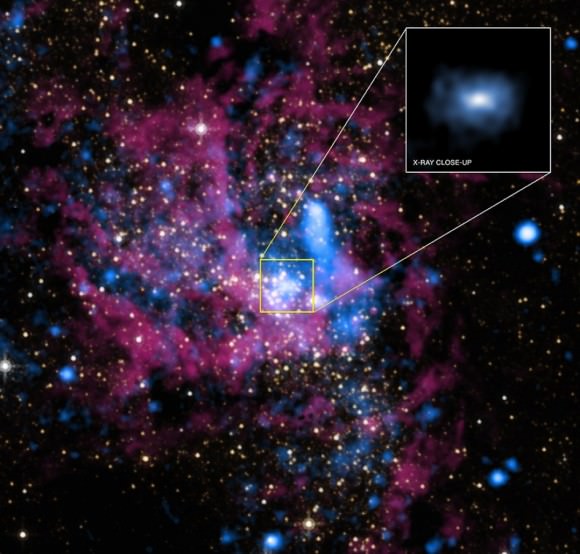Super Nova
Where Do Supernovas Take Place?
Supernovas are often seen in other galaxies. But supernovas are difficult to see in our own Milky Way galaxy because dust blocks our view. In 1604 Johannes Kepler discovered the last observed supernova in the Milky Way. NASA’s Chandra telescope discovered the
What Causes a Supernova?
A supernova happens where there is a change in the core, or center, of a star. A change can occur in two different ways, with both resulting in a supernova.
Why Do Scientists Study Supernovas?
A supernova burns for only a short period of time, but it can tell scientists a lot about the universe.
How Do NASA Scientists Look for Supernovas?
NASA scientists use different types of telescopes to look for and study supernovas. Some telescopes are used to observe the visible light from the explosion. Others record data from the X-rays and Gamma-rays that are also produced. Both NASA’s Hubble Space Telescope and Chandra X-ray Observatory have captured images of supernovas.
What Can You Do to Help?
You do not have to be a scientist, or even have a telescope, to hunt for supernovas. For example, in 2008 a teenager discovered a supernova. Then in January 2011, a 10-year-old girl from Canada discovered a supernova while looking at night sky images on her computer. The images, taken by an amateur astronomer, just happened to include a supernova.
Supernovas are often seen in other galaxies. But supernovas are difficult to see in our own Milky Way galaxy because dust blocks our view. In 1604 Johannes Kepler discovered the last observed supernova in the Milky Way. NASA’s Chandra telescope discovered the
remains of a more recent supernova. It exploded in the Milky Way more than a hundred years ago.
What Causes a Supernova?
A supernova happens where there is a change in the core, or center, of a star. A change can occur in two different ways, with both resulting in a supernova.
The first type of supernova happens in binary star systems. Binary stars are two stars that orbit the same point. One of the stars, a carbon-oxygen white dwarf, steals matter from its companion star. Eventually, the white dwarf accumulates too much matter. Having too much matter causes the star to explode, resulting in a supernova.
The second type of supernova occurs at the end of a single star’s lifetime. As the star runs out of nuclear fuel, some of its mass flows into its core. Eventually, the core is so heavy that it cannot withstand its own gravitational force. The core collapses, which results in the giant explosion of a supernova. The sun is a single star, but it does not have enough mass to become a supernova.
Why Do Scientists Study Supernovas?
A supernova burns for only a short period of time, but it can tell scientists a lot about the universe.
One kind of supernova has shown scientists that we live in an expanding universe, one that is growing at an ever increasing rate.
Scientists also have determined that supernovas play a key role in distributing elements throughout the universe. When the star explodes, it shoots elements and debris into space. Many of the elements we find here on Earth are made in the core of stars. These elements travel on to form new stars, planets and everything else in the universe.
How Do NASA Scientists Look for Supernovas?
NASA scientists use different types of telescopes to look for and study supernovas. Some telescopes are used to observe the visible light from the explosion. Others record data from the X-rays and Gamma-rays that are also produced. Both NASA’s Hubble Space Telescope and Chandra X-ray Observatory have captured images of supernovas.
In June 2012, NASA launched the first orbiting telescope that focuses light in the high-energy region of the electromagnetic spectrum. The NuSTAR mission has a number of jobs to do. It will look for collapsed stars and black holes. It also will search for the remains of supernovas. Scientists hope to learn more about how stars explode and the elements that are created by supernovas.
What Can You Do to Help?
You do not have to be a scientist, or even have a telescope, to hunt for supernovas. For example, in 2008 a teenager discovered a supernova. Then in January 2011, a 10-year-old girl from Canada discovered a supernova while looking at night sky images on her computer. The images, taken by an amateur astronomer, just happened to include a supernova.
With some practice and the right equipment, you could find the next supernova!
Words to Know
white dwarf: a star near the end of its life that has used most or all of its nuclear fuel and collapsed into a size similar to Earth




